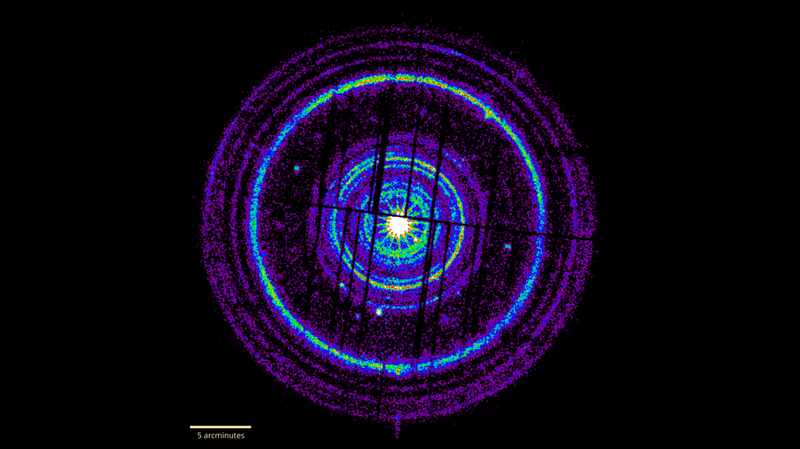We Finally Know the True Power of BOAT—the Brightest Known Gamma-Ray Burst

Rings of dust that evidence the BOAT, as seen by the XMM-Newton Observatory.
The gamma-ray burst, affectionately dubbed ‘BOAT’ (Brightest of All Time), has been found to emit gamma-rays with energies reaching up to 13 teraelectronvolts, as revealed by a collaboration of scientists who have studied these emissions.
Gamma-ray bursts are the brightest explosions the cosmos has to offer, besides the Big Bang—the explosion that happened 13.77 billion years ago that marks the beginning of time. The BOAT was detected on the morning of October 9, 2022, by the Gemini South telescope in Chile, operated by the National Science Foundation’s NOIRLab. Its official name is GRB 221009A. It occurred 2.4 billion light-years from Earth and was exceptionally long-lasting, as well as 70 times brighter than any previously recorded gamma-ray burst.
Read more
Will Smith Responds to Rumors That He Allegedly Slept With Duane Martin
Jada Pinkett-Smith Responds to 'Salacious' Rumors That Will Smith Allegedly Slept With Duane Martin
These Are The Fastest Depreciating Cars Over The Past Five Years
Brad Pitt’s F1 Movie Scraps Millions Worth Of Footage Over Dodgy Sponsorship Deals
In the standard model of gamma-ray burst afterglows, “afterglow radiation originates from the collision of the rapidly moving ejecta with the surrounding gas, generating high-speed shocks that accelerate electrons to very high energies,” said lead author Songzhan Chen, a physicist at the Institute of High Energy Physics Chinese Academy of Sciences and the Tianfu Cosmic Ray Research Center, in an email to Gizmodo. These electrons further collide with surrounding photons to produce high-energy gamma-ray radiation.”
“Theoretically, the higher the energy of these photons, the faster the radiation intensity should decay,” Chen added. “However, LHAASO’s precise measurement of its high-energy radiation spectrum in this instance revealed that the GRB radiation extends all the way to 13 TeV, showing no signs of decay. Therefore, this spectrum challenges the standard model of GRB afterglows, suggesting that photons of around 10 TeV in GRB afterglows may be produced by more complex particle acceleration processes or new radiation mechanisms.”
More scrutiny of the BOAT will likely reveal more details of its origins and impacts on the surrounding universe—even impacts on our own planet. According to a separate paper published yesterday in Nature Communications, the BOAT may have also caused perturbations high in Earth’s ionosphere, the sort of thing that could effectively deplete the planet’s ozone layer for a short period of time.
LHAASO was completed in 2021 and is expected to operate for 20 more years, Chen added, so there will be plenty more analysis of future gamma-ray bursts in the future. But none may be as bright as the luminous BOAT.
More: Cosmic ‘Lighthouses’ That Beam Gamma Rays Could Reveal Gravitational Waves All Around Us
More from Gizmodo
A Black Man’s Broken Jaw Just Cost These White Dudes a Milli
Warner Bros.’s Coyote Vs. Acme fiasco attracts congressional attention
Kotaku Asks: Who Got Snubbed At The Game Awards Nominations?
Sign up for Gizmodo's Newsletter. For the latest news, Facebook, Twitter and Instagram.

